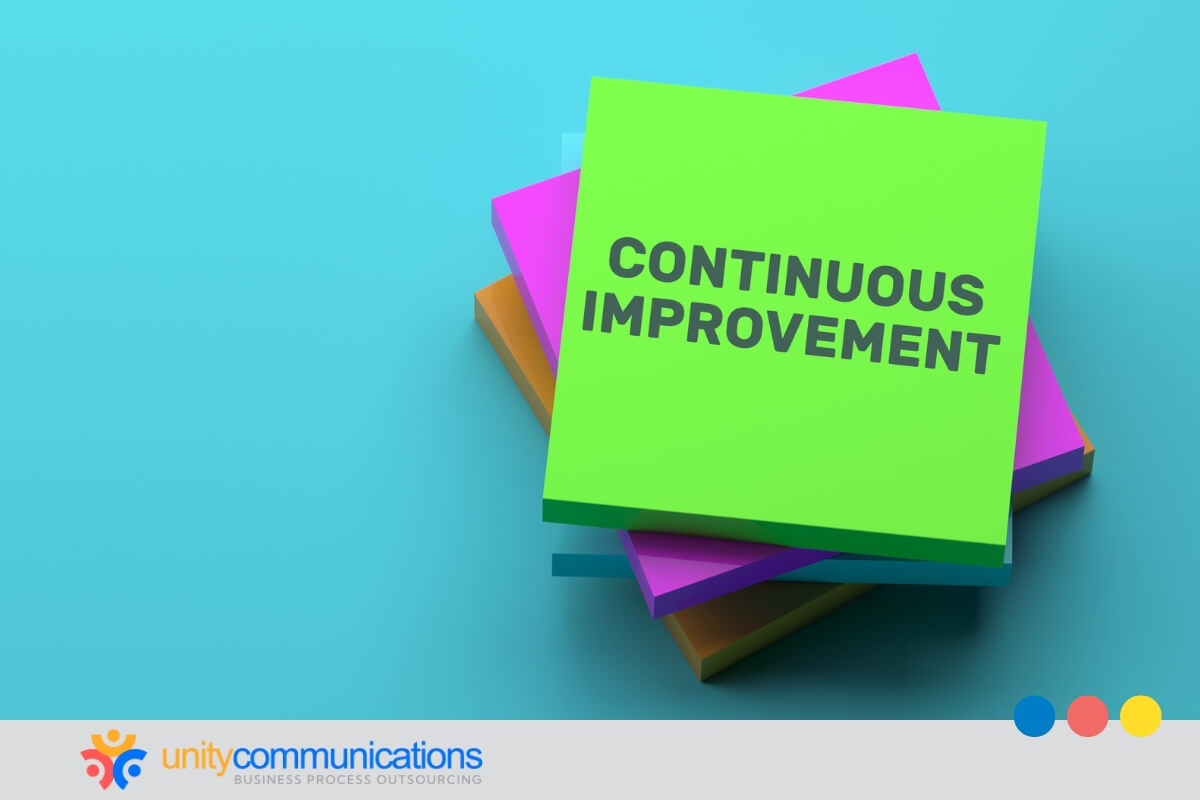Table of Contents
Outsourcing HR tasks can bring significant benefits, such as cost savings, increased efficiency, and access to specialized expertise. However, performance tracking in HR outsourcing can be complex, requiring careful monitoring to meet business goals.
Without a structured approach, organizations might struggle to measure the effectiveness of their business process outsourcing (BPO) partnerships. Implementing clear metrics and regular assessments is essential for maintaining quality, compliance, and success.
Continue reading to learn the ten steps to effectively track performance when outsourcing HR functions.
The role of BPO in human resource management

Before we discuss the steps for performance tracking HR outsourcing, let us answer the question: What is BPO? It is contracting external service providers to handle specific business functions, including human resource management.
BPO functions relevant to HR include payroll processing, recruitment, benefits administration, and employee training. Outsourcing streamlines operations, reduces costs, and helps companies focus on core business activities by delegating non-core tasks to specialized professionals who work efficiently using established processes.
But how do you know the HR partnership is effective? As a business owner, you must continually assess the BPO company’s performance against specific standards and metrics.
Consider these steps:
1. Define key KPIs for HR outsourcing
Identify relevant key performance metrics (KPIs) to help assess the efficiency, quality, and overall impact of outsourcing HR. Critical business metrics include:
- Time to hire measures the average time to fill open positions, indicating recruitment efficiency.
- Employee satisfaction assesses employee feedback on HR services to ensure a positive experience.
- Payroll accuracy rate tracks compliance and reliability by determining the percentage of error-free payroll transactions.
- Compliance adherence monitors compliance with labor laws and regulations to mitigate legal risks.
- Service-level agreement (SLA) compliance evaluates the BPO provider’s ability to meet agreed-upon service standards.
- Cost savings are used to analyze the financial benefits of outsourcing HR tasks compared to in-house management.
These KPIs can effectively monitor and optimize HR outsourcing strategies.
2. Set clear expectations and SLAs
Defining clear expectations and SLAs is essential for a successful HR outsourcing partnership. SLAs align parties to goals and promote accountability by outlining performance standards, responsibilities, and deliverables.
Here are ways to set expectations and create SLAs:
- Define measurable objectives. Establish specific, quantifiable goals for HR outsourcing services.
- Outline service scope. Enumerate the BPO provider’s actual HR responsibilities.
- Specify performance metrics. Include KPIs such as response times, accuracy rates, and compliance adherence.
- Set communication protocols. Define reporting frequency, escalation processes, and feedback mechanisms.
- Include penalties and incentives. Identify the consequences for non-compliance and rewards for exceeding expectations.
Well-structured SLAs foster accountability, efficiency, and alignment with strategic HR goals.
3. Use tech for performance tracking in HR outsourcing
Technology and analytics enhance the accuracy and efficiency of HR processes. These tools provide real-time data, automate workflows, and offer valuable insights into vital HR functions.
These platforms include the following:
- Human resource information systems (HRIS) centralize employee data, payroll, and compliance tracking.
- Applicant tracking systems (ATS) streamline recruitment and hiring processes through automated monitoring.
- Payroll management software ensures accurate payroll processing and compliance with labor laws.
- Employee engagement platforms collect feedback and measure employee satisfaction.
- HR analytics tools analyze workforce trends, performance, and outsourcing efficiency.
- AI and automation enhance decision-making with predictive analytics and automated workflows.
Integrating these advanced technologies can optimize HR outsourcing performance and drive data-informed decisions.
4. Comply with labor laws and HR standards
In Q4 2022, 91% of U.S. businesses struggled with compliance, relying on costly and error-prone manual processes.
This underscores the importance of complying with labor laws and HR standards in outsourcing. Compliance maintains a reputable partnership by mitigating legal risks and upholding ethical workplace practices, such as protecting employee rights.
Tracking performance in HR outsourcing should include determining the BPO provider’s compliance with the following:
- Fair Labor Standards Act (FLSA) regulates minimum wage, overtime pay, and working hours.
- EU’s General Data Protection Regulation (GDPR) protects employee data privacy and security.
- Equal Employment Opportunity (EEO) Laws prevent discrimination, especially during hiring, promotions, and workplace policies.
- Occupational Safety and Health Administration (OSHA) Standards promote safe and healthy working conditions.
- Family and Medical Leave Act (FMLA) grants eligible employees job-protected leave for medical or family reasons.
- ISO 30414 (Human Capital Reporting) establishes global HR performance measurement standards in workforce productivity, diversity and inclusion, employee engagement, leadership effectiveness, and organizational culture.
Compliance matters when assessing HR outsourcing performance. It reveals the provider’s adherence to labor laws, data protection regulations, and industry standards.
5. Monitor employee engagement and satisfaction metrics
About 72% of organizations said employee satisfaction improved after outsourcing HR functions. This highlights the importance of monitoring engagement and satisfaction as part of performance tracking in HR outsourcing.
Tracking these metrics assesses the effectiveness of BPO partnerships in delivering quality HR services:
- The net promoter score (NPS) measures employees’ willingness to recommend the company as a workplace.
- Job satisfaction surveys gather feedback on workplace culture, management, and HR services.
- The turnover rate tracks the percentage of employees leaving the company within a specific period.
- The absenteeism rate monitors employee attendance and identifies potential disengagement issues.
- Training and development participation evaluates employee involvement in learning programs and career growth opportunities.
- The resolution time for HR issues assesses how quickly the BPO team resolves HR concerns, such as payroll or benefits disputes.
Employee engagement and satisfaction indicate how outsourcing influences the internal team’s productivity, retention, and workplace morale. Tracking these metrics enables HR outsourcing to actively contribute to a healthy, high-performing workplace.
6. Evaluate cost-effectiveness and ROI
Outsourcing HR operations can reduce business costs by 22%. For this reason, performance tracking in HR outsourcing should also measure the approach’s cost-effectiveness and returns to determine its financial and operational benefits.
Here are the techniques:
- Compare internal teams versus outsourcing costs. Analyze expenses related to salaries, technology, and overhead.
- Measure productivity gains. Assess time saved on administrative tasks and its impact on business growth.
- Track cost savings. Identify reductions in recruitment, payroll processing, and benefits administration costs.
- Analyze service quality. Determine whether outsourced HR functions meet performance standards and employee needs.
- Review compliance and risk reduction. Evaluate cost savings from avoiding legal penalties and regulatory violations.
- Assess scalability. Know whether outsourcing supports business expansion and workforce changes.
Evaluating these factors can disclose the actual value and financial viability of HR outsourcing, especially in terms of cost efficiency and scalability.
7. Address common challenges in performance tracking
Tracking the performance of HR outsourcing firms comes with challenges, such as data inconsistencies, a lack of transparency, and difficulty in measuring intangible outcomes. Identifying them can help accurately evaluate performance.
The following are the common challenges in performance tracking in HR outsourcing and their solutions:
- Lack of clear KPIs. Establish specific, measurable KPIs aligned with business goals.
- Data inconsistencies. Use standardized reporting tools and HR analytics software for accurate tracking.
- Limited transparency from BPO providers. Require regular reports and audits as part of the SLA.
- Difficulty measuring employee satisfaction. Conduct periodic surveys and track engagement metrics.
- Slow issue resolution. Implement structured communication channels and escalation procedures.
- Compliance risks. Ensure providers follow labor laws through regular compliance checks and legal audits.
Addressing these challenges enhances HR outsourcing performance by minimizing disruptions, clarifying expectations, and making it easier to adapt to business needs.
8. Perform regular performance audits
Regular performance audits and effective reporting methods promote accountability in HR outsourcing. These practices help track key metrics, identify areas for improvement, and maintain high service standards.
- Schedule routine audits. Conduct periodic evaluations to assess compliance and service quality.
- Use data-driven reports. Leverage HR analytics to generate insights on KPIs.
- Implement real-time dashboards. Provide instant visibility into outsourcing performance and trends.
- Gather employee feedback. Use surveys and focus groups to assess HR service satisfaction.
- Benchmark against industry standards. Compare performance metrics with industry best practices.
- Promote transparent communication. Share audit results with BPO providers to foster continuous improvement.
A structured audit and reporting system can help optimize their HR outsourcing strategies and drive long-term success by providing clear insights into performance, identifying areas for improvement, and supporting data-driven decision-making.
9. Apply best practices for maintaining service quality
Service quality requires proactive management, clear expectations, and continuous performance monitoring. Implementing best practices retains efficiency, compliance, and employee satisfaction.
- Implement tiered service levels. Design service levels based on the importance of HR functions (e.g., payroll vs. employee onboarding) to allocate resources and attention appropriately.
- Foster strong communication. Maintain an open dialogue with outsourcing partners to address concerns promptly.
- Train and upskill HR teams. Help in-house teams understand how to work effectively with BPO providers.
- Integrate BPO tools with existing systems. Connect the BPO provider’s systems with yours to receive accurate, updated data and synchronize workflow.
- Build a contingency plan. To avoid service interruptions, prepare for disruptions by outlining backup providers, data recovery protocols, and continuity strategies.
These best practices maximize the benefits of HR outsourcing while maintaining high service standards.
10. Promote continuous improvement in HR outsourcing
Adopting a growth mindset maximizes HR outsourcing benefits. It encourages you to refine processes, leverage technology, and foster strong partnerships to enhance efficiency and service quality.
Here are strategies that promote continuous improvement in HR outsourcing:
- Benchmark against industry leaders. Compare performance with top-performing organizations to stay competitive.
- Encourage innovation and flexibility. Adapt to changing workforce needs, technology, and regulatory updates.
- Conduct root-cause analysis on recurring issues. Identify the underlying causes of repeated service gaps or delays to prevent future breakdowns.
- Develop joint action plans for underperformance. When targets are unmet, co-create a formal improvement plan with your provider that includes timelines, accountability, and measurable milestones.
- Customize service delivery by employee segments. Tailor HR services for different employee groups (e.g., full-time, part-time, remote, contract) to improve relevance and effectiveness.
Refining HR outsourcing strategies drives long-term success and operational excellence by aligning services with evolving business needs.
The bottom line
![]()
Performance tracking in HR outsourcing requires clear KPIs, well-defined SLAs, and HR technology for accurate data analysis. Regular audits, employee feedback, and continuous improvement strategies help maintain service quality and compliance.
By proactively monitoring performance, you can maximize the value of HR outsourcing and drive organizational success.
Are you ready to enhance your HR outsourcing strategy? Let’s connect to learn how to implement these steps.



